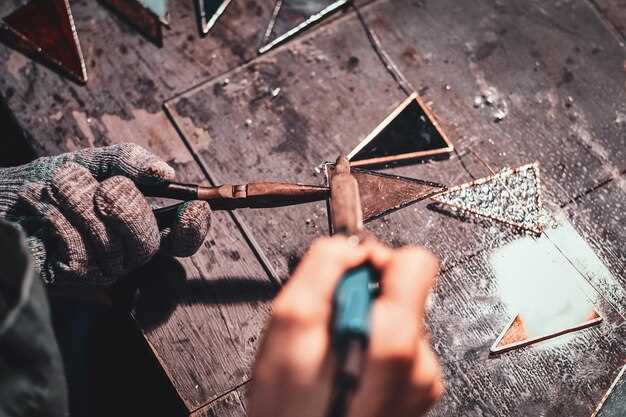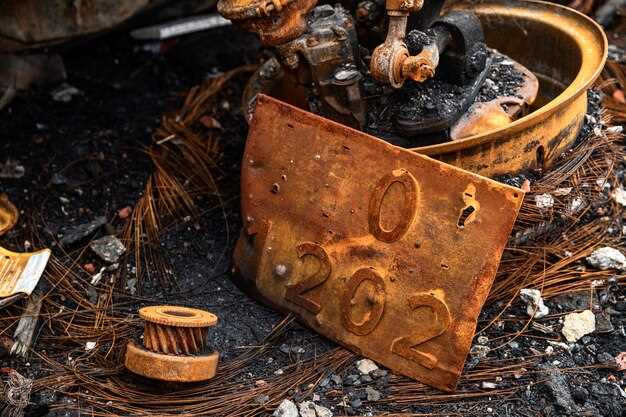
Rust can turn beautiful old metal plates into unsightly remnants of their former glory. Whether they are family heirlooms, decorative items, or valuable antiques, restoring them requires a careful approach to rust removal. Understanding the chemistry of rust and the methods available for its removal is crucial for preserving the integrity of the metal without causing further damage.
In this guide, we will explore various techniques for effectively eliminating rust from metal plates. From using household items like vinegar and baking soda to more specialized products available in the market, we will provide a step-by-step process to tackle rust of varying severity. Additionally, proper safety precautions and finishing techniques will be discussed to ensure that your efforts result in not only rust-free but also well-preserved metal plates.
Whether you are an experienced restorer or a beginner taking on your first DIY project, this article aims to equip you with the knowledge and techniques necessary for successful rust removal. With the right tools and methods, you can breathe new life into your metal plates, allowing them to shine once again.
Choosing the Right Rust Removal Method for Your Metal Plates
When it comes to removing rust from old metal plates, selecting the appropriate method is crucial to ensure effective results while preserving the integrity of the metal. Various rust removal techniques can be utilized, each with its own advantages and limitations.
Mechanical Removal involves using abrasive tools or materials, such as sandpaper, wire brushes, or power tools. This method is highly effective for heavy rust, as it physically removes the rust layer. However, care must be taken to avoid damaging the metal beneath, especially on thinner plates.
Chemical Rust Removers are available in several formulations, usually based on acids or phosphates. These products react with rust to dissolve it, making removal easier. While they can be very effective, it is important to follow safety precautions and manufacturer instructions, as some chemicals can be harsh and damaging to the environment.
Electrolysis is a less common but powerful rust removal technique. It involves submerging the rusted plates in an electrolyte solution and using electrical current to reverse the rusting process. This method is gentle on the metal and can effectively remove rust without harming the surface, but requires proper setups, such as a power source and electrodes.
Natural Methods using household items like vinegar or baking soda can also be effective for light rust. Soaking the metal plates in a solution of these substances can sometimes loosen rust, making it easier to scrub off. While this method is eco-friendly, it may require more time and labor compared to other techniques.
Considerations such as the extent of rust, the type of metal, and the desired finish should guide your choice of method. For example, delicate antiques may benefit from gentler chemical or natural treatments, while heavily rusted industrial plates might necessitate more aggressive mechanical methods. Ultimately, a combination of techniques may yield the best results, maximizing removal efficiency while preserving the underlying metal.
Step-by-Step Guide to Using Chemical Rust Removers Safely

Using chemical rust removers can be an efficient way to restore old metal plates, but safety should always be your top priority. Follow this step-by-step guide to ensure safe usage.
Step 1: Gather Your Materials
Before you start, collect all necessary items: chemical rust remover, protective gloves, safety goggles, a mask, a plastic scraper, and a clean cloth. Ensure you have a well-ventilated workspace.
Step 2: Prepare the Area
Choose an outdoor location or a well-ventilated indoor space. Protect surrounding surfaces with plastic sheets or newspapers. Ensure the area is free of flames or sparks, as chemical removers can be flammable.
Step 3: Wear Protective Gear
Before applying any chemicals, put on your gloves, safety goggles, and mask. This will protect your skin, eyes, and respiratory system from harmful fumes and splashes.
Step 4: Apply the Chemical Rust Remover
Following the manufacturer’s instructions, apply the rust remover generously to the affected areas. Use a plastic scraper to spread the product evenly, ensuring complete coverage of the rusted spots.
Step 5: Allow Time to Work
Let the chemical sit for the recommended duration specified on the label. Avoid the temptation to rush this step, as proper penetration is key for effective rust removal.
Step 6: Scrub the Surface
After the designated time has passed, use a clean cloth or a non-abrasive scrubber to wipe away the rust and chemical residue. To strengthen the removal process, you might need to repeat this step on stubborn rust spots.
Step 7: Rinse and Dry
Thoroughly rinse the metal plates with water to remove any remaining chemical. Ensure no residue is left, as it can cause further corrosion. After rinsing, dry the plates completely to prevent moisture accumulation.
Step 8: Clean Up
Dispose of any used materials responsibly. Follow local regulations for hazardous waste disposal. Ensure all tools are cleaned and stored safely.
Step 9: Store Chemicals Properly
Store leftover rust remover in its original container, tightly sealed and out of reach of children and pets. Keep it in a cool, dry place to prevent deterioration.
By adhering to these steps, you can safely and effectively use chemical rust removers on old metal plates, prolonging their lifespan and functionality.
Natural Alternatives for Rust Removal: Pros and Cons

When it comes to removing rust from old metal plates, many individuals seek natural alternatives due to their eco-friendliness and cost-effectiveness. Below, we explore some popular natural methods, examining their benefits and drawbacks.
1. Vinegar
Vinegar, particularly white vinegar, is an effective rust remover thanks to its acetic acid content. It can penetrate rust and help dissolve it from the metal surface.
Pros: Easily accessible, non-toxic, and can effectively remove light rust. It is safe for the environment and can also be used for other cleaning tasks.
Cons: May require extended soaking time for heavily rusted items and might not be effective on thick layers of rust.
2. Baking Soda
Baking soda combined with water forms a paste that adheres to rust and facilitates its removal when scrubbed.
Pros: Non-toxic, gentle on metal surfaces, and can be used for a variety of cleaning purposes beyond rust removal.
Cons: Less effective for deep rust and may require significant physical effort to remove rust residue.
3. Lemon Juice and Salt
A combination of lemon juice and salt creates a powerful natural rust remover. The citric acid in lemon juice, combined with the abrasiveness of salt, helps scrub away rust.
Pros: Effective for light to moderate rust and leaves a fresh scent. It is also biodegradable and safe for the environment.
Cons: May take longer for results compared to chemical alternatives and requires scrubbing to achieve desired effects.
4. Potato and Dish Soap
The oxalic acid in potatoes can dissolve rust. When combined with dish soap, it can be an effective solution for smaller rust spots.
Pros: Non-toxic and readily available, offering a safe cleaning method. Effective for small rust areas.
Cons: Limited effectiveness on larger or more severe rust issues and requires multiple applications.
Conclusion
Natural alternatives for rust removal offer a range of benefits, including reduced environmental impact and accessibility. However, their effectiveness may vary based on the severity of rust and the type of metal surface. Understanding both the pros and cons of each method can help individuals choose the best approach for their specific rust removal needs.
